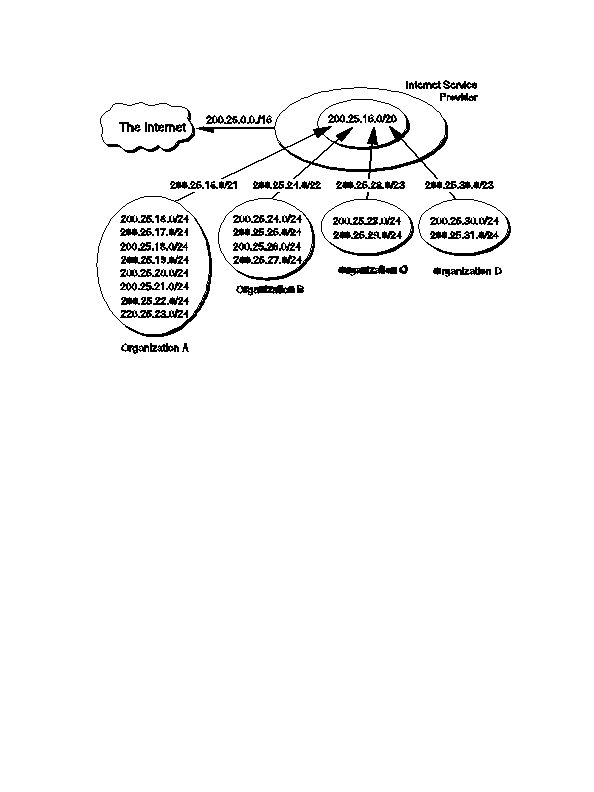
F I G U R E 3 2 . R e d u c e d S i z e o f I n t e r n e t R o u t i n g Ta b l e s
Figure 32 illustrates how the allocation described in the previous CIDR
example helps reduce the size of the Internet routing tables. Assume
that a portion of the ISP's address block (200.25.16.0/20) has been allo
cated as described in the previous example:
Organization A aggregates eight /24s into a single advertisement
(200.25.16.0/21)
Organization B aggregates four /24s into a single advertisement
(200.25.24.0/22)
Organization C aggregates two /24s into a single advertisement
(200.25.28.0/23)
Organization D aggregates two /24s into a single advertisement
(200.25.30.0/23)
Then the ISP can inject the 256 /24s in its allocation into the Internet
with a single advertisement 200.25.0.0/16.
Note that route aggregation by means of BGP 4 (the protocol that allows
CIDR aggregation) is not automatic. The network engineers must config
ure each router to perform the required aggregation. The successful
deployment of CIDR allows the number of individual networks on the
Internet to expand while minimizing the number of routes in the Inter
net routing tables.
3 7
footer
Our web partners:
Inexpensive
Web Hosting
Jsp Web Hosting
Jsp Web Hosting
Cheapest Web Hosting
Java Web Hosting
Quality Web Templates
Dreamweaver Web Templates
Frontpage Web Templates
Jsp Web Hosting
Cheapest Hosting
Cheapest Web Hosting
Java Web Hosting
Tomcat Web Hosting
Quality Web Hosting
Best Web Hosting
Java Web Hosting
Visionwebhosting.net Business web hosting division of Vision Web Hosting Inc.. All rights reserved

